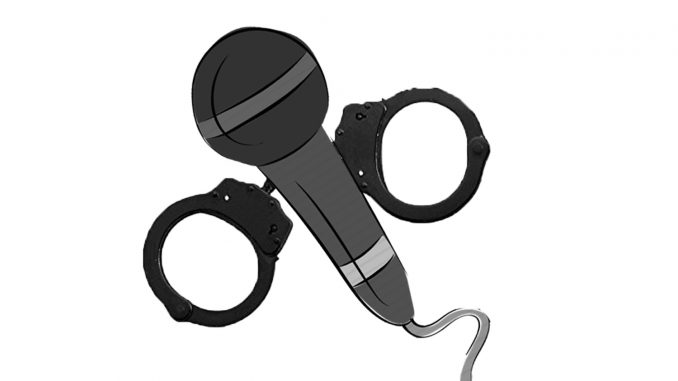
By Sam Reeves, Social Media Director/Webmaster
 Over the summer, I wanted to explore more music genres and made it my goal to listen to more groups and artists from all over the globe. As an avid fan of music, I was excited to begin this adventure, and while I found a bunch of new communities who welcomed newcomers with open arms, I also discovered a lot of hate for foreign musicians in the music industry and music community.
Over the summer, I wanted to explore more music genres and made it my goal to listen to more groups and artists from all over the globe. As an avid fan of music, I was excited to begin this adventure, and while I found a bunch of new communities who welcomed newcomers with open arms, I also discovered a lot of hate for foreign musicians in the music industry and music community.
My musical journey began shortly after I started my new job. My coworker often played music while she did the dishes, and I started to become curious about who she was listening to. The band she was playing was BTS, a Korean pop boy band.
She is the one who inspired me to start this adventure. She encouraged me to check the band out and to watch their videos. Admittedly, I had my own reservations at first about listening to the group more; I had seen some weird things come out of the Kpop fandom. Nevertheless, I dove headfirst into one of their most popular songs, “Fake Love,” and quickly fell in love.
The track was so different from the Western music style that Americans are so used to. It had a unique breakdown of rap lines cut with smooth vocals, and the lyrics mixed Korean and English words together. The music video also showed off impressive visuals, creative outfits, and stunning choreography.
However, when I looked more into the group, I found a lot of people poking fun at the group’s work and even discrediting them for their most recent achievements. Older people called them another ‘cookie-cutter boyband,’ many social media trolls made fun of the members, saying they were too feminine or that they all looked the same. People even made comments referring to their music with racist stereotypes of Asian languages.
This sort of hate was not only aimed at the Korean music industry, but several others as well.
For example, I had watched a reaction video to some of the top most viewed/liked videos of the year. A majority of the videos were Latin/Hispanic pop music videos and almost every person expressed that they were shocked so many foreign artists had made it into the Top 10, yet few people had heard the songs played on radio stations.
So why is there such a bias against products of foreign music industries? Is the quality not as good as our domestic artists’ content? Is there too much of a barrier between cultures to enjoy each other’s works? No. Simply put, a lot of people in the United States are just extremely biased or hold racist viewpoints. Or they’re simply just not willing to go outside of their comfort zone when it comes to consuming the arts.
It’s not a quality issue, and there’s not a barrier. The only thing that stands between enjoying foreign arts is one’s own bias. It shouldn’t be this way, but it just shows how humans still hold so much discontent for each other. The amount of work that global artists put into their content is mindblowing and deserves to be appreciated more.
Many groups in Korea train for years before debuting their first song. We’re talking intense training here, not just a day or two a week. Training every single day, sometimes going for more than 14 hours a day. Their skills are honed over years to perfection.
Another recent trend is that while we do have some songs from foreign artists that go viral, they don’t go viral until one key component is added — a feature from a domestic artist. Consider the song “Despacito.” Its music video was originally released in January of 2017, but the song didn’t chart until a remix was introduced just a couple months later that featured Canadian artist Justin Bieber. The same happened to the song “Mi Gente.” Again, the original was released, only to be followed by a remix featuring another domestic artist, in this case, Beyoncé. The remix climbed the music charts.
Foreign musicians should not have to feature familiar artists in order to gain popularity or to chart. Americans should start embracing non-domestic artists and expand their music libraries. The only way to do this is if we just start listening and open our minds to change. I did it and found some of my new favorite songs and bands. You can too.
